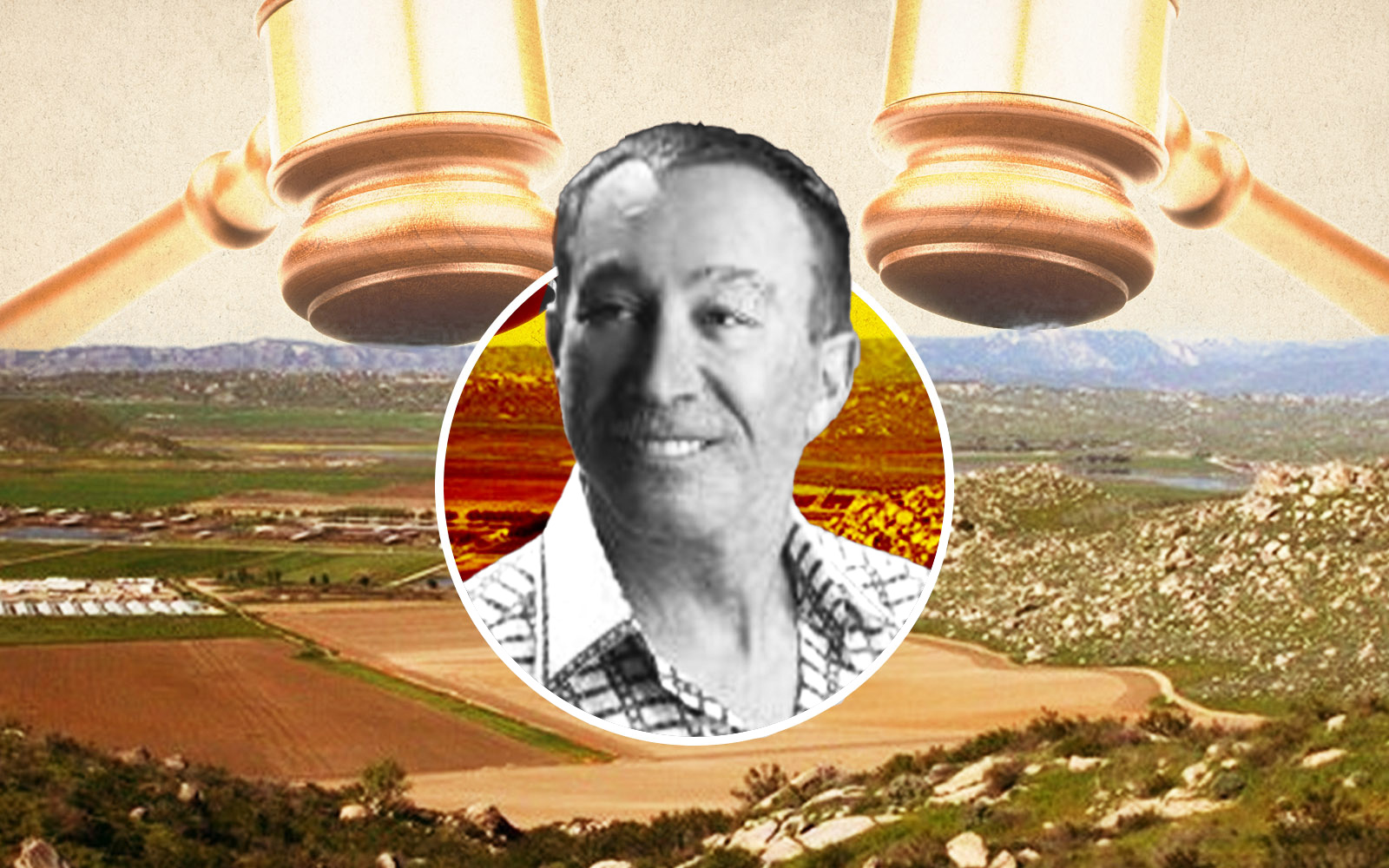The Elizabeth Street Garden is a green oasis where visitors can escape from the throngs of Nolita shoppers and gaze at a statue of a dog or a Sphinx.
Or it is wasted Manhattan space that hosts a menagerie of extravagant lawn ornaments instead of housing more than 100 formerly homeless senior citizens.
These diametrically opposed views epitomize a type of fight that is increasingly frequent, particularly in housing-starved New York and California cities. Officials in these states have taken aim at environmental reviews, which they blame for making housing development needlessly slower and more expensive.
In the Manhattan garden battle, a state court ruled the city must put together a full environmental impact statement detailing the potential effects of the planned housing for homeless seniors.
“Our case is a quintessential example about why you need [environmental] review,” said Joseph Reiver, the son of an art gallerist who formerly leased the city-owned parcel. “This is the only real green space in the area.”
But others say the case underscores how rules around environmental review are abused to block much-needed housing. And it is not alone.
The California Environmental Quality Act In California, or CEQA, has long been derided as easily manipulated by special interest groups to stop development they dislike, divorced from actual environmental concerns.
The proposals to reform environmental processes in New York and California show how these conversations are evolving and underscore the need to make it easier to build housing while protecting the environment.
“Over the years, it has been twisted, converted and contorted,” Dave Rand, a land use attorney based in Los Angeles, said of California’s law. “Every housing project that we work on has a fear that the opponents will leverage CEQA.”
Changes on the horizon
In November, a state court judge ruled that New York City had wrongly concluded that the residential project at Elizabeth Street Garden would not result in a significant loss of open space. The proposed building would take up 70 percent of the half-acre site.
In New York, real estate projects that go through the city’s land use review process must conduct an environmental assessment. If it finds that the impact would be significant, an environmental impact statement must be completed.
The city is appealing the decision. In recent years, a number of lawsuits challenging environmental review as insufficient have been deemed worthy of trial by a judge only to be dismissed on appeal.
“You still have judges that for whatever reason are more sympathetic to opponents than the law actually allows,” said Ken Fisher, an attorney with Cozen O’Connor who represents Pennrose, the developer seeking to build senior housing on the garden site. He spoke generally about environmental review cases, but referred comments on the case to the city, which declined to comment.
Separately, the city has been trying to evict the garden, saying 200,000 seniors are on the waiting list for federally funded affordable housing in the city, and the average wait is seven years.
Litigation can make it more difficult for developers to secure financing, Fisher said, but lenders have also adapted and courts are hesitant to immediately halt a project.
“Most sophisticated lenders have gotten used to the notion that a case may get brought,” he said. “It is extremely rare for courts to issue preliminary and injunctive relief until they hear the merits of the case.”
Meanwhile city and state officials are exploring whether to exempt certain projects from having to do environmental impact statements. One state bill would allow state-funded projects with 1,000 housing units or fewer to avoid environmental review if the developer certifies that the project does not violate environmental law and that the construction is sustainable.
The Department of City Planning and other city agencies are studying what projects have traditionally triggered environmental impact statements. The goal is to find what type of projects usually avoid these costly, time-consuming reviews because the initial assessment finds they have no significant adverse environmental impact.
The Adams administration is reportedly looking to exempt housing projects with fewer than 200 units, but a spokesperson for City Planning indicated that an exemption could consider geography and other circumstances beyond just unit count.
Fisher called the move rational, but he does not think it will be transformative in terms of project timelines. Opponents of development could still take legal action to try to force in-depth reviews.
“They have learned that they can just continuously hurl meritless lawsuits at development,” one developer source said. “New York is in danger of becoming like California.”
A blanket exemption could reverse that trend, saving at least some projects time upfront. For developments that need new zoning, pre-certification and environmental review takes an average of nearly two years, accounting for 80 percent of the time it takes for a project to go through the city’s land use review process, according to the Citizens Budget Commission.
“It ends up being a big cost and time savings to not have to review these projects,” said Toni Finger, an attorney with Kramer Levin who represents developers on environmental issues. “There are certain aspects of the process that can be unnecessarily drawn out.”
Held hostage
In California, the threat of college students hosting “loud and unruly parties” qualifies as an environmental impact.
That is according to a state appellate ruling in February that UC Berkeley must redo an environmental review for planned student housing — this time taking noise into account — before it moves forward. The court also found that the college failed to consider other options to house 1,100 students and 125 lower-income and formerly homeless individuals, rather than clearing the historic People’s Park.
The decision has become a poster child for the need to reform CEQA.
“California cannot afford to be held hostage by Nimbys who weaponize CEQA to block student and affordable housing,” Gov. Gavin Newsom said about the ruling in February. “This law needs to change.”
Before the appeals court’s decision, Newsom signed into law a measure that exempts certain student and faculty housing from CEQA, which will help future development but does not apply to Berkeley’s dorm. The governor has also pitched speeding up CEQA for certain infrastructure projects and preventing lawsuits from delaying certain projects for more than 270 days.
The state has approved more than 20 bills to reform the law since Newsom took office in 2019, though the measures largely affect specific projects, according to the San Francisco Chronicle.
“Every year we’re disappointed because the politics do not come together,” Rand said. “Typically it is just talk. And we get reforms on the margin.”
CEQA’s defenders include environmental advocates, construction labor groups and NIMBY groups.
The law was passed in 1970, signed by then-Gov. Ronald Reagan. It is still regarded as a key tool in mitigating a development’s pollution and effect on public health.
“It is not like it has only caused harm. It has actually saved a lot of lives,” said Matthew Lewis, of California YIMBY. “There’s been huge gains as a result of the law. The goal is not to roll back the clock on the gains we’ve made.”
A 2023 report commissioned by the nonprofit Rose Foundation for Communities and the Environment argues that criticism of CEQA is largely anecdotal and overblown. It found that only 23.8 percent, or 121, of CEQA lawsuits filed between 2019 and 2021 challenged new housing.
“It is critical to understand that CEQA litigation does not ‘kill’ any of the challenged housing-related projects,” the report states. “When a petitioner prevails in a CEQA lawsuit, the project may be delayed but it can still move forward as long as the lead agency complies with the Act’s requirements for disclosing and mitigating its impacts.”
However, a recent report by pro-business group Center for Jobs & the Economy and Jennifer Hernandez, a land use attorney at the firm Holland & Knight, found that CEQA lawsuits targeted more than half of the state’s projected housing production in 2020.
While deep-pocketed developers may be able to weather project delays, the threat of CEQA challenges hurts smaller builders, Rand said.
Hernandez’s report also noted an irony of the environmental protection law: An “explosion” of lawsuits in 2020 employed it against solar, wind and resiliency projects, such as flood management.
“It is being used in a way that is leading to worse environmental results,” Lewis said. “Part of the problem is that laws like CEQA empower people who have the resources to gum up the process.”
Dueling narratives
Lewis said that while CEQA reform could boost housing production, such changes on their own would not solve the state’s housing crisis. He said local governments have the ability, outside environmental review, to speed up housing production.
“Any city that wants to streamline housing approvals can do that any day they want to,” he said.
Still, the California state legislature is moving forward with a measure to crack down on localities that disapprove housing projects that comply with local and state land-use and environmental laws.
Reiver, whose group Elizabeth Street Garden is opposing New York City’s appeal, voiced concern about New York exempting certain projects from a full environmental review, saying that city agencies can too easily “spin the narrative in their favor” within the thinner environmental assessments.
In the case of the garden, Reiver’s group argues that the city failed to seriously consider alternative sites for the housing project, including a city-owned property at 388 Hudson Street. Reiver said the city created a “false choice” between affordable housing and the greenspace on Elizabeth Street, when it could have already built senior housing on the Hudson Street site.
City officials responded by planning a separate, 100-unit project there.
Others see the case as an extreme example of the kind of opposition that accompanies nearly every apartment project in the city.
“No matter how benign a project may be,” Fisher said, “there is always going to be somebody who is opposed to it.”
Read more



